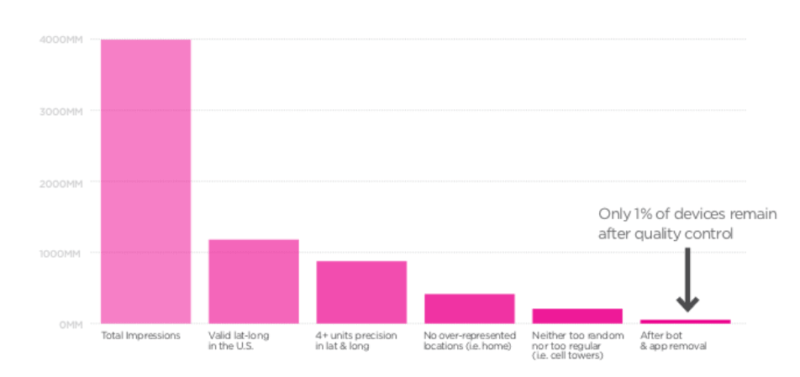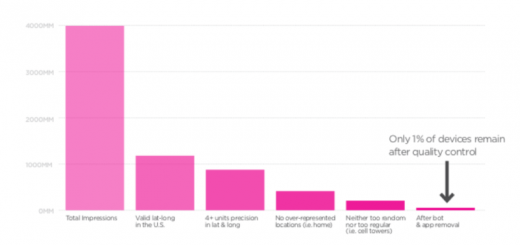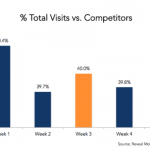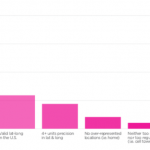Report: Only 1% of exchange location data useful for offline attribution
Study also found that average accuracy of exchange-derived locations is “over 4 New York City blocks.”

Location data has become a kind of Swiss Army Knife for digital marketing. It can be used for audience targeting and segmentation, for offline attribution and for customer journey and competitive insights.
But the data needs to be accurate for these purposes — especially when it comes to store visitation and attribution. For those brands and agencies working with location data and various location data providers, accuracy is emerging as an issue not unlike viewability.
Ultimately, there will probably need to be similar third-party verification. And while the Media Rating Council recently issued Location-Based Advertising Measurement Guidelines that are intended to establish standards and help practitioners, they haven’t yet kicked in.
The debate about the relative accuracy and value of location data derived from the exchange bid-stream and that derived from first-party apps has been raging for about three years, with partisans on each side. First-party data is more accurate but less plentiful; third-party location data is much more available but often very polluted or inaccurate.
The latest missive in this debate comes from Placed, a location analytics company recently acquired by Snap. The company just issued a report (registration required) on location accuracy.
The latest missive in this debate comes from Placed, a location analytics company recently acquired by Snap. The company just issued a report (registration required) on location accuracy.
Exchange-derived location data usable for in-store attribution

Source: Placed (2017)
The often-technical report asserts that “the average accuracy of exchange-derived locations is over 4 New York City blocks.” It also finds that “only 1 percent of locations from bid requests are useful for in-store measurement (based on a location accuracy < 50 meters).”
Bid-stream location data comes from multiple sources including GPS, cell towers, WiFi and IP addresses, but it rarely comes from the device itself.
The report goes on to critique location data coming from exchanges on multiple fronts. Among the criticisms, which all go to the accuracy and utility of the bid-stream data, are the following:
- Eighty percent of bid requests are made while people are between visits — and most of the rest are made at home (so of limited value for attribution).
- Bid stream data overindexes on location data from certain categories (e.g., Lodging, and Gyms & Fitness Centers), likely due to readily available WiFi combined with extended time spent at a given business.
- Key retail categories such as Fashion, Sporting Goods and Computers & Electronics are under-represented in bid data.
Low-quality location data in exchanges is a function of many factors. Primarily, however, the report asserts that “ad publishers have an incentive to provide location data to the exchange, but not enough of one to justify the battery power cost of getting location information accurate enough for ad measurement.”
Placed allows that some of the exchange-location data is arguably sufficient for targeting (in some cases), but not accurate enough for offline attribution in almost any case.
In the end, both third-party and first-party data are required for comprehensive location data. But, as the Placed report argues, there needs to be rigorous validation of third-party data to prevent unwanted “noise,” “systematic bias” and “over- and underestimate visit-related metrics.”
Marketing Land – Internet Marketing News, Strategies & Tips
(23)












